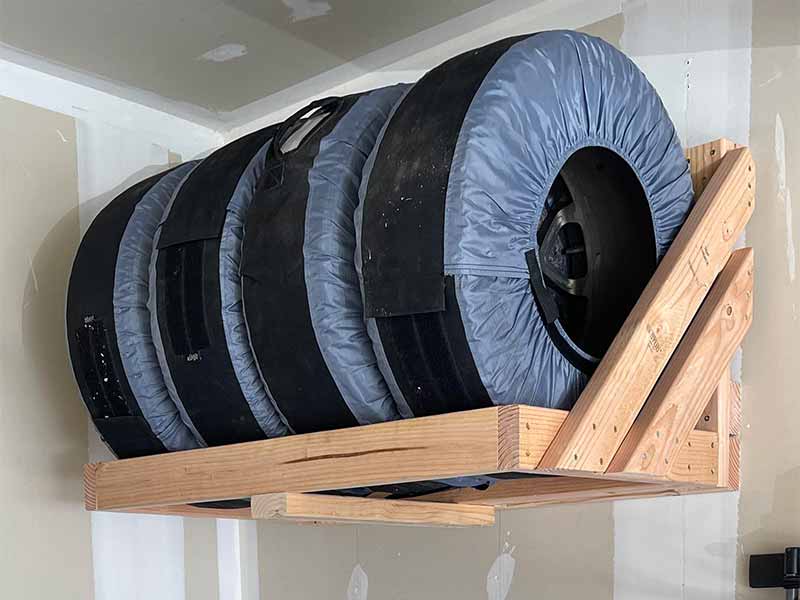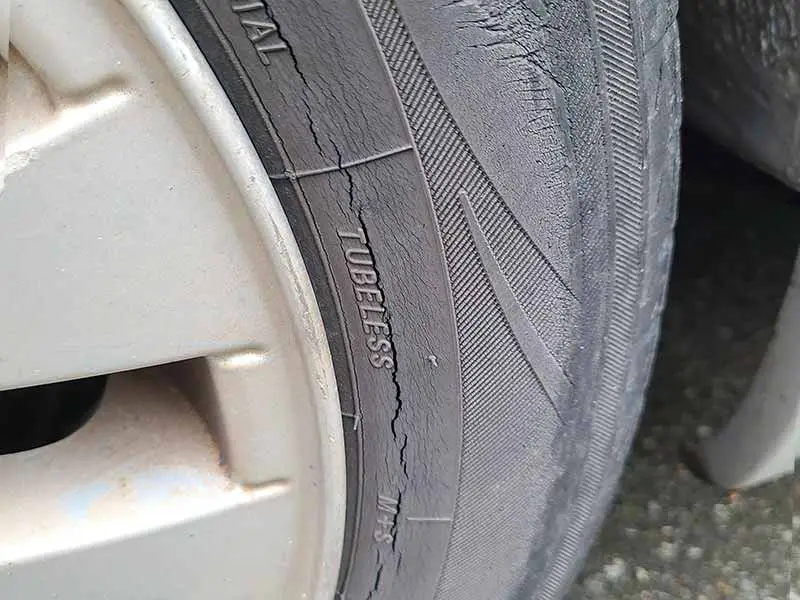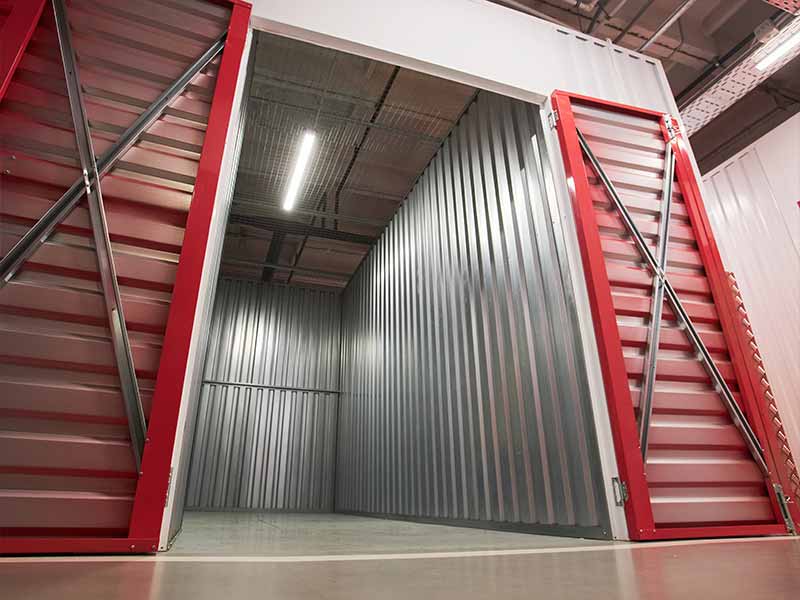Imagine you’ve just invested in a set of high-quality tires for your vehicle, or perhaps you’re rotating seasonal tires. You’re aware these rubber companions don’t come cheap and are crucial for your safety on the road.
How Long Can You Store Tires In A Garage?
You can generally store tires in a garage for 6 to 10 years if you maintain proper conditions, such as keeping them in a clean, dry, cool, and well-ventilated area away from direct sunlight and chemicals.
However, routine checks and correct storage methods are crucial to extend their life.
In this article, we delve deep into tire composition, aging, and the best practices for long-term storage. We weigh the pros and cons of garage storage, explore alternative storage solutions, and provide season-specific advice to ensure your tires stay in prime condition year after year.

Pros and Cons of Storing Tires in a Garage
Storing tires in a garage seems straightforward, right? Roll them in and forget about them until next season. However, there’s more to consider if you want to keep your tires in top-notch condition. Let’s weigh the advantages and disadvantages.
Advantages of Garage Storage
- Convenience: Probably the most significant advantage. Your tires are accessible whenever you need them.
- Cost-Effective: No need to pay for commercial storage units when you have space at home.
- Controlled Environment: You have some control over the storage conditions, potentially more so than outside or in a shed.
Disadvantages of Garage Storage
- Temperature Fluctuations: Garages can become quite hot in the summer and cold in the winter, unless they’re climate-controlled.
- Space Limitations: Tires can take up significant space, which might be needed for other items or vehicles.
- Potential for Improper Storage: Without the right setup, tires might be stored in ways that can degrade their condition faster.
Ideal Garage Features for Tire Storage
If a garage is your chosen storage spot, here are some features and practices to make it a tire haven:
Climate Control
- Temperature: Aim for a consistent, moderate temperature. Extreme heat or cold can accelerate aging and damage.
- Humidity: Keep it dry, but not too dry. Excessive moisture can lead to mold and mildew, while very dry air can speed up the drying out of rubber.
Protection and Organization
- Racks: Store tires on racks to keep them off the ground and prevent flat spots.
- Covers: Protect tires from dust, dirt, and direct sunlight with tire covers or bags.
- Spacing: Ensure there’s enough space around each tire to prevent unnecessary pressure or deformation.

How Long Are Tires Good for in Storage?
When it comes to storing tires, the million-dollar question is: How long can you actually store them without compromising their integrity and safety? The answer isn’t just about time; it’s about conditions. Let’s dive into the lifespan of stored tires and what affects it.
Estimated Lifespan for Stored Tires
- General Guideline: Typically, tires are good for about 6 to 10 years from the date of manufacture. However, this can vary greatly depending on storage conditions.
- Manufacturer Recommendations: Always check the recommendations from your tire’s manufacturer, as some may have specific storage guidelines.
Signs of Aging in Stored Tires
Even when stored, tires age. Here are some telltale signs that your stored tires might be past their prime:
- Surface Cracks: Look for small cracks in the sidewall and tread.
- Hardening: The rubber should still feel somewhat pliable. If it’s hardening, it’s aging.
- Discoloration: Any significant changes in color can indicate deterioration.
Maintaining Tire Integrity in Storage
To ensure your tires last as long as possible in storage, consider these factors:
Optimal Conditions
- Temperature: Store tires in a cool, dry place with a consistent temperature, ideally between 50°F and 77°F (10°C and 25°C).
- Humidity: Moderate humidity is best. Too much moisture can lead to mold or mildew, while too little can dry out the tires.
- Sunlight: Avoid direct sunlight and UV exposure, which can accelerate aging.
Storage Best Practices
- Cleanliness: Clean tires before storage. Dirt and road salts can cause corrosion and degrade rubber over time.
- Positioning: If tires are mounted on rims, store them vertically to prevent flat spots. Unmounted tires are best stored horizontally and stacked.
- Rotation: Periodically rotate the position of the tires to prevent any one side from bearing all the weight for too long.

Tire Covers
Best Practices for Long-Term Tire Storage
Storing your tires correctly is not just about finding a spot in the garage and forgetting them until the next season. It’s about preserving their structure, material, and performance. Here are some best practices to ensure your tires remain in good shape during long-term storage.
Preparation for Storage
Before you stow away your tires, a little preparation can go a long way. Here’s what you need to do:
- Cleaning: Thoroughly clean each tire with soap and water to remove dirt, grease, and brake dust. This prevents material degradation.
- Inspection: Check for any signs of damage or wear. Address any issues before storage, as problems can worsen over time.
- Dry Them Out: Ensure the tires are completely dry before storing to prevent mold or mildew.
Proper Positioning and Stacking
How you position your tires in storage can affect their shape and longevity.
- Mounted Tires (on rims):
- Vertical Storage: Store them standing up, just as they would sit on your vehicle. This prevents flat spots and maintains shape.
- Avoid Hanging: Hanging tires on rims for extended periods can distort the shape of the tire.
- Unmounted Tires:
- Horizontal Stacking: Place them flat on a clean surface and stack them. However, don’t stack too high to avoid excessive weight on the bottom tires.
Environmental Considerations
Creating the right environment in your storage area can drastically improve your tires’ lifespan.
- Temperature: Keep it cool and stable. Avoid areas where temperature swings are common.
- Humidity: Dry is good, but not too dry. Aim for a moderate humidity level.
- Sunlight: Keep them out of direct sunlight. UV rays can deteriorate the rubber quickly.
Ongoing Care
Even in storage, tires need a little attention now and then.
- Rotation: Every few months, rotate the position of the tires to evenly distribute any weight or pressure.
- Inspection: Periodically inspect the tires for any signs of damage or degradation. Early detection can prevent further issues.

Alternatives to Storing Tires in a Garage
While many opt for the convenience of garage storage, it’s not the only way to keep your tires in good shape during the off-season. Let’s explore some alternatives that might better suit your needs or offer improved conditions for tire longevity.
Air-Conditioned Commercial Storage Units
These specialized units are designed for optimal storage conditions:
- Climate Control: Maintains a consistent temperature and humidity level, ideal for tire preservation.
- Security: Typically offer better security against theft or vandalism.
- Space Efficiency: Frees up space in your home or garage.
Pros:
- Optimal Conditions: They provide an environment specifically tailored to preserve various items, including tires.
- Less Worry: No need to constantly check on conditions like temperature or humidity.
Cons:
- Cost: More expensive than home storage options.
- Accessibility: You’ll have to travel to the unit to retrieve or inspect your tires.
Tire Hotels or Specialty Services
Some tire shops or service centers offer storage services known as “tire hotels.”
- Professional Care: Your tires are handled and stored by professionals who understand optimal tire care.
- Convenience: Drop off your tires and pick them up when you need them without worrying about storage conditions.
Pros:
- Expert Handling: Tires are inspected, cleaned, and stored following industry standards.
- Space Saving: Keeps your garage or storage space free for other uses.
Cons:
- Cost: This service typically comes with a fee, which might be higher than other storage options.
- Appointment Needed: You’ll need to schedule drop-off and pick-up times.
Tips for Choosing the Right Alternative
When considering these alternatives, keep the following in mind:
- Budget: Weigh the cost against the benefits and convenience offered.
- Frequency of Use: If you switch tires seasonally, proximity and ease of access might be more important.
- Space at Home: If you’re limited on space, off-site options might be more attractive.
Balancing Cost and Convenience
Ultimately, the best storage option balances cost, convenience, and tire preservation. Consider how often you’ll need to access the tires, the typical climate in your area, and how much you’re willing to invest in their upkeep.
Resources
Below are some links you may find helpful when learning about tires:
Final Thoughts
By understanding the intricacies of tire storage, from the basic composition and aging process to the specifics of airtight bags and alternative storage options, you’re equipped to make informed decisions that extend the life and performance of your tires.
Investing a little time and effort into proper storage can save you money and hassle in the long run, not to mention keep you safer on the roads.
Good luck and happy motoring.





